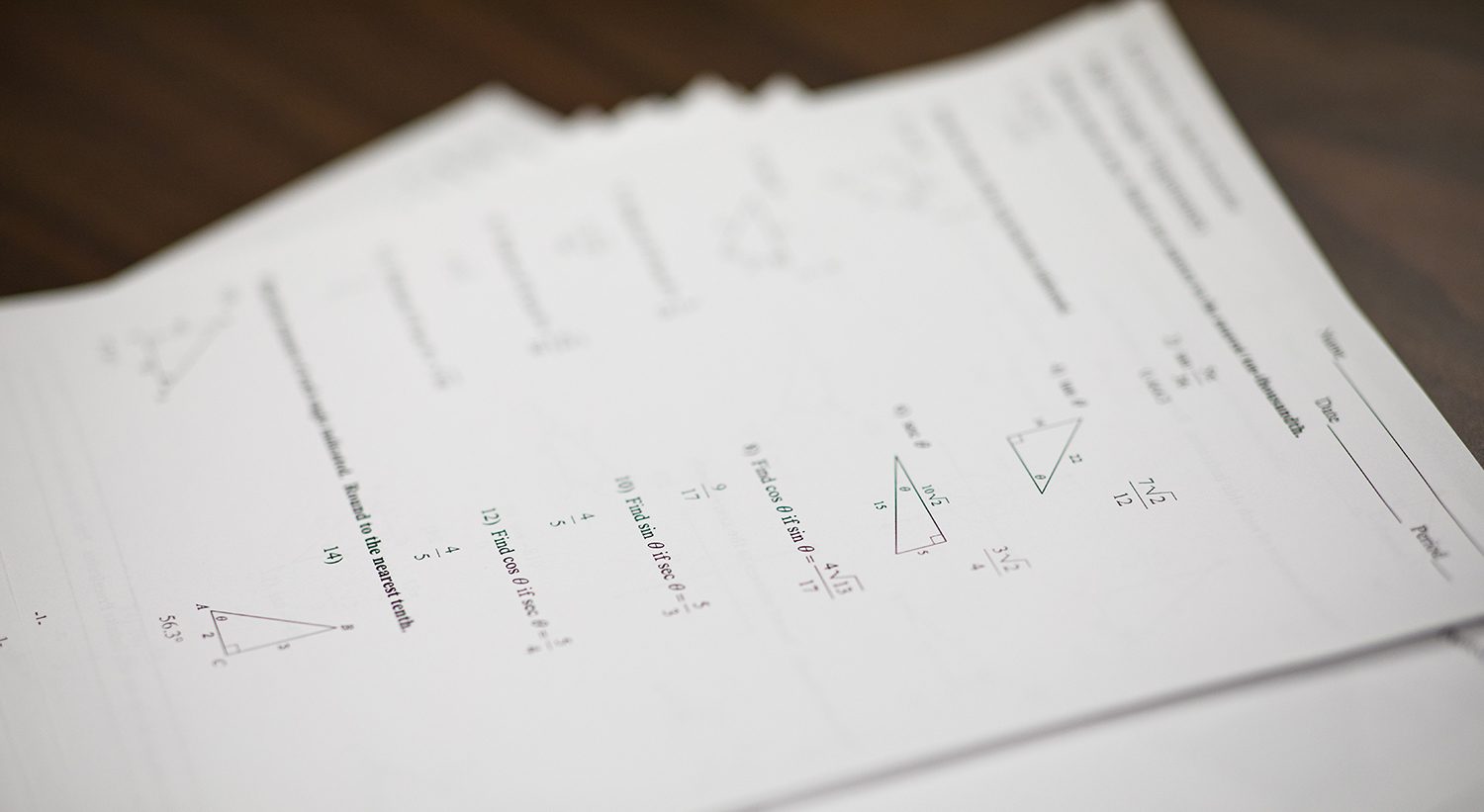Solve This
Author: Lona

Author: Lona

Thanks to Elgin Johnston for creating these delights:
Maria recently attended a going a way party for a friend. When asked the next day how many people were at the party she said that she did not remember. However, she did remember that she was in charge of cutting the rectangular cake. She related “I made 20 straight cuts, each from from one side of the cake to another side, and I remember that there were 9 points where cut lines intersected and that no intersection point was on more than two cut lines. Everybody at the party got one piece of cake there was no cake left.”
How many people were at the party?
Solution:
There were 30 people at the party. Because the order of the cuts does not matter we may assume that the first k cuts are made with no intersections and that each of the last 20 – k cuts intersects one or more previously made cuts. With the first k (non-intersecting) cuts the cake will be in k+1 pieces. If a cut intersects l other cuts then it will create l + 1 new pieces; we can think of this as 1 piece for the line and one more for each intersection.
Because there will be 9 intersections with these last 20 – k segments, these last 20 – k lines will add (20- k) +9 extra pieces for a total of (k +1)+(20 – k)+9 = 30 pieces (or guests).
Let N be the infinite set consisting of the ordered paird (-k, k2), k=1, 2, 3, … and P the infinite set consisting of the ordered pairs (k, k2), k=1,2,3, … Take a point QN from set N, a point QP from set P and construct the segment QN QP. How many of these segments intersect the y-axis in the point (0, 1000)?
Solution:
Let a and b be positive integers, and consider the line determined by the points (—a, a²) (from the left of parabola) and (b, b²) (from the right). This line has equation:
$y-a^2 = \frac{b^2 – a^2}{b+a}(x+a)$
Thus, the line intersects the y-axis in the point (0, ab). For ab = 1,000, a and b must be positive integers whose product is 1,000. Because 1,000 = 2³5³ has (3 +1) (3 +1) = 16 factors, there are 16 of the lines that intersect the y-axis in (0, 1000). The pairs (a, b) for which this happens are:
(1, 1000), (2, 500), (4, 250), (5, 200) (8, 125), (10, 100), (20, 50), (25, 40), (40, 25), (50, 20), (100, 10), (125, 8), (200, 5), (250, 4), (500, 2), (1000, 1).
It is known that a polynomial ${P(x)}$ of degree 19 has the form
and that all the zeros of ${P(x)}$ integers. White out the complete factorization of ${P(x)}$.
Solution:
Let the 19 zeros, listed by multiplicity, be $r_1, r_2, r_3…,r_{19}$. Then
$P(x)=(x-r_1)(x-r_2)\cdots(x-r_{19}) = x^{19} – 17x^{18} + \cdots -11$
On multiplying the factors together, we see that the constant term is
$(-r_1)(-r_2)\cdots(-r_{19}) = r_1r_2 \cdots r_{19} = -11$
It follows that one of the zeros must be ±11 and each of the other is ±1. On multiplying the factors together, the coefficient of x18 is
$-r_1 – r_2 – \cdots -r_{19} = -17$ so $r_1 + r_2 + \cdots + r_{19} = 17$.
If one of the rk = −11, and all the others are ±1, then it is impossible to get the sum 17. Thus one of the rk = 11 and the other eighteen are either 1 or −1, selected so the sum of the zeros is 17. If k of the zeros are equal to 1, then 18−k are equal to −1 and the sum of the zeros is
$11 + k \cdot 1 + (18-k)(-1) = 17$
It follows that k = 12 so twelve of the zeros are equal to 1 and the remaining six are equal to −1. Thus the complete factorization of P (x) is
$P(x) = (x-11)(x-1)^{12}(x+1)^6$
Given that
find the value of csc $ \theta\ + $ cot $\theta.$ The answer must be exact (no decimals).
Solution:
Multiplying both sides of (1) by $sec\ \theta\ − tan\ \theta$ leads to
$2017(sec\ \theta\ − tan\ \theta) = (sec\ \theta\ + tan\ \theta)(sec\ \theta− tan\ \theta) = sec^2 \theta − tan^2 \theta = 1.$
Therefore
$sec\ \theta\ – tan\ \theta = \frac{1}{2017}$
Adding this result to (1) gives
$sec\ \theta = \frac{2017^2 +1}{2\cdot2017}$, and subtracting the result from (1) we find $tan\ \theta = \frac{2017^2-1}{2 \cdot 2017}$
Because both expressions are positive we conclude that θ is a first quadrant angle, so both cot θ and csc θ are also positive. Thus,
$cot \theta\ = \frac{1}{tan \theta} = \frac{2 \cdot 2017}{2017^2 – 1}$ and csc $\theta = \sqrt{1 + cot^2 \theta} = \frac{2017^2 +1}{2017^2)-1}$
Therefore
$csc \theta + cot \theta = \frac{2017^2+1}{2017^2-1} + \frac {2 \cdot 2017}{2017^2 – 1} = \frac {(2017 + 1)^2}{2017^2 -1} = \frac {(2017 + 1)^2}{(2017 -1)(2017 +1)} = \frac {1009}{1008}$
For real number x the fractional part of x is denoted {x} and is defined by
Where $ \lfloor x \rfloor $ is the greatest integer less than or equal to $x$. Find a positive number $r$ such that
For extra fame and fortune, find all positive solutions to this equation.
Solution:
Because r = 1 is not a solution, we may assume that $0 < r 1$. Then ${r} = r$ and the fact that ${r} + $ {1/$r$} = 1 implies that
$1/r = n + (1 − r)$
for some positive integer n. It then follows that $r^2 – (n+1)r + 1 = 0$ so
$r = \frac{(n+1) – \sqrt{(n+1)^2 – 4}}{2}$ + $\frac{(n +1) + \sqrt{(n + 1)^2 -4}}{2} = n + 1$
is an integer, these two numbers have fractional parts that sum to 1.